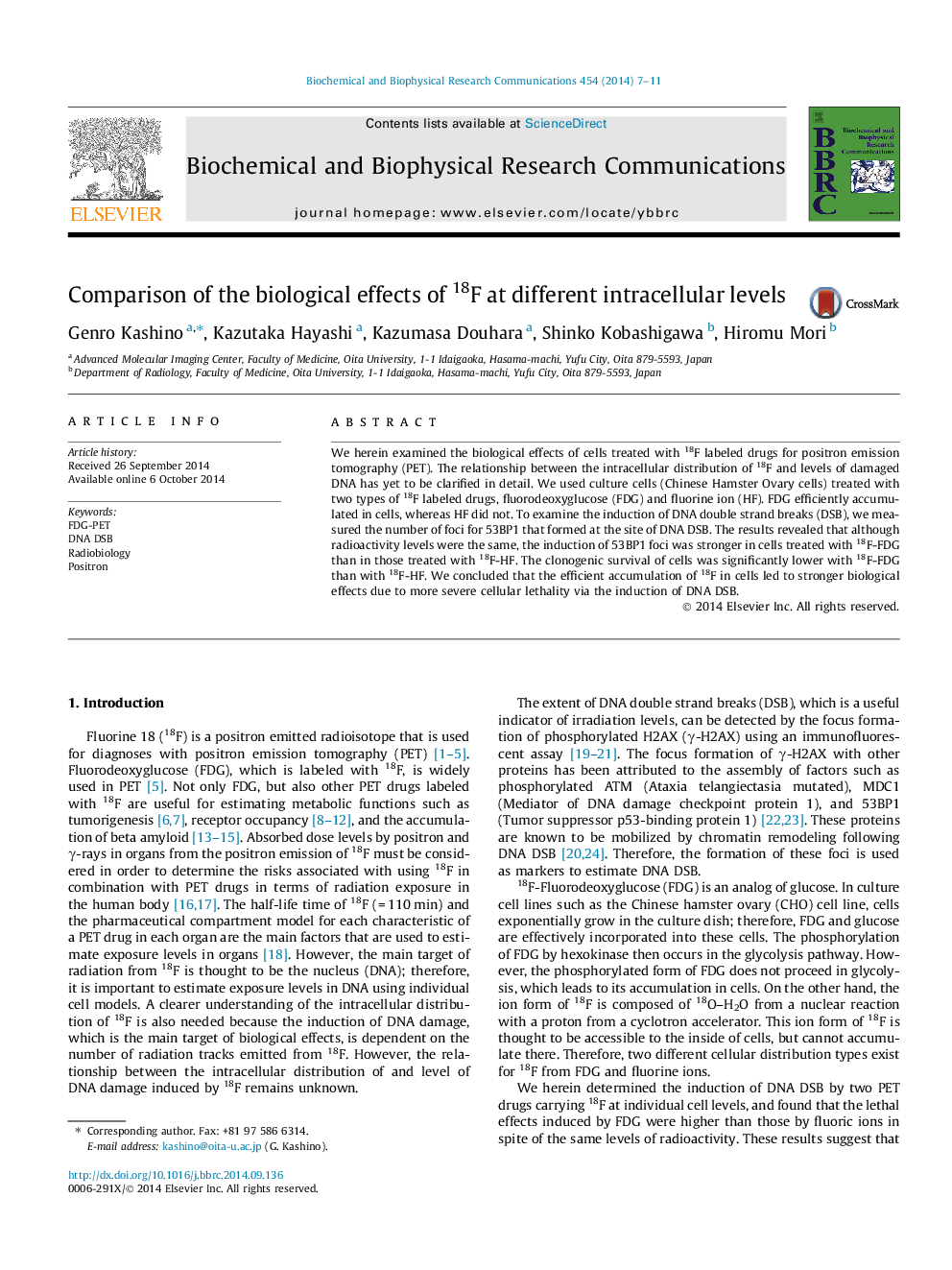| Article ID | Journal | Published Year | Pages | File Type |
|---|---|---|---|---|
| 10753413 | Biochemical and Biophysical Research Communications | 2014 | 5 Pages |
Abstract
We herein examined the biological effects of cells treated with 18F labeled drugs for positron emission tomography (PET). The relationship between the intracellular distribution of 18F and levels of damaged DNA has yet to be clarified in detail. We used culture cells (Chinese Hamster Ovary cells) treated with two types of 18F labeled drugs, fluorodeoxyglucose (FDG) and fluorine ion (HF). FDG efficiently accumulated in cells, whereas HF did not. To examine the induction of DNA double strand breaks (DSB), we measured the number of foci for 53BP1 that formed at the site of DNA DSB. The results revealed that although radioactivity levels were the same, the induction of 53BP1 foci was stronger in cells treated with 18F-FDG than in those treated with 18F-HF. The clonogenic survival of cells was significantly lower with 18F-FDG than with 18F-HF. We concluded that the efficient accumulation of 18F in cells led to stronger biological effects due to more severe cellular lethality via the induction of DNA DSB.
Keywords
Related Topics
Life Sciences
Biochemistry, Genetics and Molecular Biology
Biochemistry
Authors
Genro Kashino, Kazutaka Hayashi, Kazumasa Douhara, Shinko Kobashigawa, Hiromu Mori,
